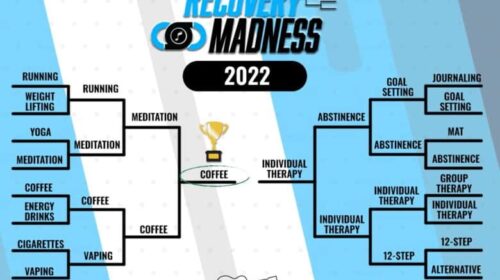Opioid drug overdoses continue to take lives all over the nation. In 2020, opioids were responsible for approximately 75% of opioid overdose fatalities[1]. Opioids have been under fire from official sources in recent years due to the seeming over prescription of these medications and questions regarding their safety.
Opioids (like oxycodone) are incredibly addictive. Once a person becomes dependent on the substance, it’s increasingly difficult to stop using. Due to the severity of the opioid epidemic, doctors created a class of drugs to help combat the addiction itself and the withdrawal symptoms that accompany efforts to quit. Suboxone® is one such solution.

Suboxone® Drug Facts
Suboxone® is not an over-the-counter drug, and you must get a prescription to take it. It is used as an FDA-approved approach for medication-assisted treatment to aid in alleviating opioid dependence. Suboxone® contains naloxone and buprenorphine, a partial opioid agonist combination that binds to opioid receptors in the brain to trick you into believing you have taken the drug.
Treatment for addiction that combines the use of medication with counseling and other forms of assistance is known as medication-assisted treatment (MAT). The most streamlined option for treating opioid addiction or opioid dependence frequently involves the support of prescription medications[2].
Buprenorphine, an opioid partial agonist found in Suboxone®, attaches to opioid receptors in the brain to deceive your brain into mirroring the effects of opioids — calmness, reduced pain, and an overall sense of feeling well.
Prescription drugs, like Suboxone®, address opioid use disorder and are often used when a person is undergoing addiction treatment.
Your doctor will inquire about your addiction, health, and other issues before administering the first dose of any opioid addiction medicine. A urine or saliva test will be performed on you to check for drugs. Additionally, you will undergo testing for disorders that are common in people who may be prone to drug misuse. To make sure the prescription may be used without harm, your liver will also be examined. Your doctor might advise buprenorphine for you if it’s secure and suitable for you.
Together, you and your doctor or other professional treating substance misuse decide on a treatment strategy. The plan outlines the prescribed drug schedule, counseling, and other services that will be offered, as well as the requirements that must be met.
Suboxone® Uses
Suboxone®, an opioid medication available only by prescription, is used to stop the effects of opioid drugs, including pain alleviation, which can trigger drug dependence. Suboxone® can be taken by itself or in combination with other drugs.
Suboxone® is a member of the pharmacological class known as opioid antagonists, analgesics, and partial opioid agonists. Suboxone® is typically only prescribed to treat opioid use disorder. On rare occasions, Suboxone® may be prescribed for pain.
Appearance Of Suboxone®
Suboxone® is available in a variety of shapes, sizes, colors, and strengths, much like the majority of other prescription medications. It’s crucial that you take the recommended amount of Suboxone® when a doctor prescribes it to you as part of medication-assisted therapy to guarantee safety and effectiveness.
Sublingual tablets or pills and dissolvable strips or sublingual films are both options for Suboxone®. For easy differentiation between each form, it comes in various hues, sizes, and shapes. The medication’s strength is also engraved on each tablet or strip.
Some strips are orange and rectangular. You will find the dosage printed on the strip. Some Suboxone® pills are orange and hexagonal. Generic versions of the drug may be orange or white and typically come in a circular shape.
Side Effects Of Suboxone®
Suboxone® comes with a wide range of side effects, some less desirable than others.
Short-Term Side Effects
Suboxone® is used to reduce opiate cravings and opioid withdrawal symptoms, however, using it has some adverse effects as well.
Following are a few short-term potential side effects of using Suboxone®:
- Heart flutters
- Blood pressure changes
- Hives or itchy skin
- Acne
- Difficulties with libido
- Reduced appetite
- Constipation or other digestive issues
- Unpleasant urination
- Backache
- Hazy vision
- Drowsiness
- Headaches
- Depression
- Mood changes
- Muscle aches
- Runny nose
- Stomach pain
- Breathing problems
Long-Term Side Effects
As with any drug, with the use of Suboxone®, you might face long-term side effects. There are pros and cons associated with the long-term side effects.
Disadvantage long-term side effects of Suboxone®:
- You could be more susceptible to depression
- You might develop anxiety
- You might become less tolerant of pain
- You might experience bouts of confusion
- You may become more socially isolated
- You may experience constipation
Benefit side effects of long-term use of Suboxone®:
- Less cravings for opiates
- More manageable addiction tendencies
- Less of a desire to get high from opioids
- Diminished physical dependence for opioids
- Potential Mental Health Risks Of Suboxone®
There are some psychological or mental health risks of Suboxone® to be aware of. Some of them include:
- Obsessive thoughts around using drugs
- Engaging in higher-risk behaviors
- Heightened anxiety
- Intrusive thoughts
- Depression
- Worsening of mental health symptoms from a mental health disorder
- Feelings of guilt
- Low self-esteem
- Irrational beliefs
Suboxone® Drug Interactions
With any prescription drug, there will be interactions when you mix it with other substances, and Suboxone® is no exception.
Drinking alcohol while getting Suboxone® therapy is not recommended. This is due to the fact that using Suboxone® while intoxicated increases your risk of suffering dangerous side effects[3]. These include difficulty breathing or respiratory depression, exhaustion, confusion, and in severe cases, death.
Combining Suboxone® and benzos carries a significant and elevated risk of adverse consequences. Each drug intensifies the side effects of the other, which can create a dangerous situation.
Suboxone® also has negative and potentially dangerous effects when mixed with depressants or sleeping pills like Ativan. Since both drugs are central nervous system depressants, taking them simultaneously raises the possibility of respiratory difficulty, coma, and death.
While using Suboxone®, you can still take antidepressants, although doing so will require careful consultation with your doctor. There is no ideal antidepressant to take when using Suboxone®. You should use the medication that works best for you.
Suboxone® Treatment For Opioid Use Disorder
When used under the guidance of a medical professional, Suboxone® is a wonderful treatment for opioid use disorder, especially alongside behavioral therapy. Unfortunately, there is also a social stigma that using Suboxone® in substance treatment means the person isn’t fully pursuing recovery.
Despite some of its negative effects, this is categorically false. Nor does it accurately reflect the medical realities of substance dependence or effective forms of addiction therapy. For those who suffer from severe opiate addiction and seek a safe way to overcome their reliance, Suboxone® serves as a lifeline toward lasting recovery and sobriety.
Treatment For Suboxone® Dependence
Unfortunately, even life-saving prescription drugs like Suboxone® have the potential to be used not as prescribed and lead to dependence. There are treatment programs and individualized treatment options designed to address Suboxone® dependence alongside opiate addiction.
At Recovery Unplugged, we believe there should never be a barrier to receiving recovery healthcare. We are passionate about treating our clients with dignity and respect. We take a holistic approach to healing, incorporating nontraditional therapies, like pet and music therapy, to address addictions and promote whole-person healing.

Learn More About Suboxone® and Opioid Use Disorder Treatment Programs At Recovery Unplugged
Our Massachusetts recovery center offers truly holistic methods for treating and addressing substance use disorder. We offer pet therapy and even allow you to bring your pet from home so they can be with you during your healing journey. We also promote the power of music, and its ability to inspire self-reflection and heal emotional turmoil.
If you or someone you know is struggling with opioid addiction, we are here for you. Our experienced team of medical professionals is well-versed in treating substance use with compassion and hope. Contact us to talk about a treatment plan that is right for you. If you’re interested in learning more about medication-assisted treatment, we invite you to read more here.
Sources:
[1](DCD), D. C. D. (2023, January 26). Opioid Facts and Statistics. HHS.gov. Retrieved January 30, 2023, from https://www.hhs.gov/opioids/index.htmlstatistics/index.html#
[2]FAQs: Provision of methadone and buprenorphine for the treatment of … (n.d.). Retrieved January 30, 2023, from https://www.samhsa.gov/medications-substance-use-disorders
[3]Velander, J. R. (2018). Suboxone®: Rationale, science, misconceptions. The Ochsner journal. Retrieved January 30, 2023, from https://www.ncbi.nlm.nih.gov/pmc/articles/PMC5855417/

























